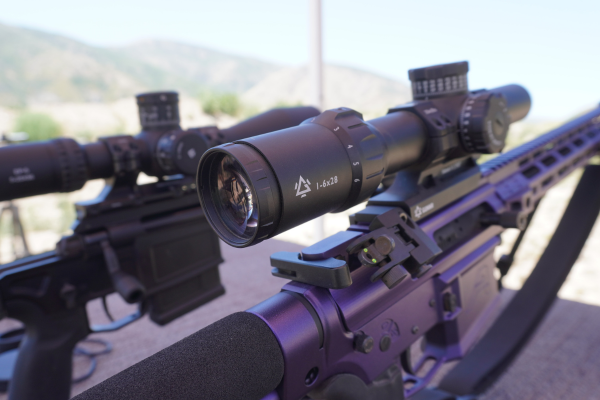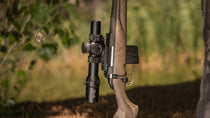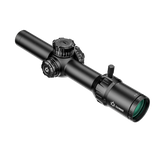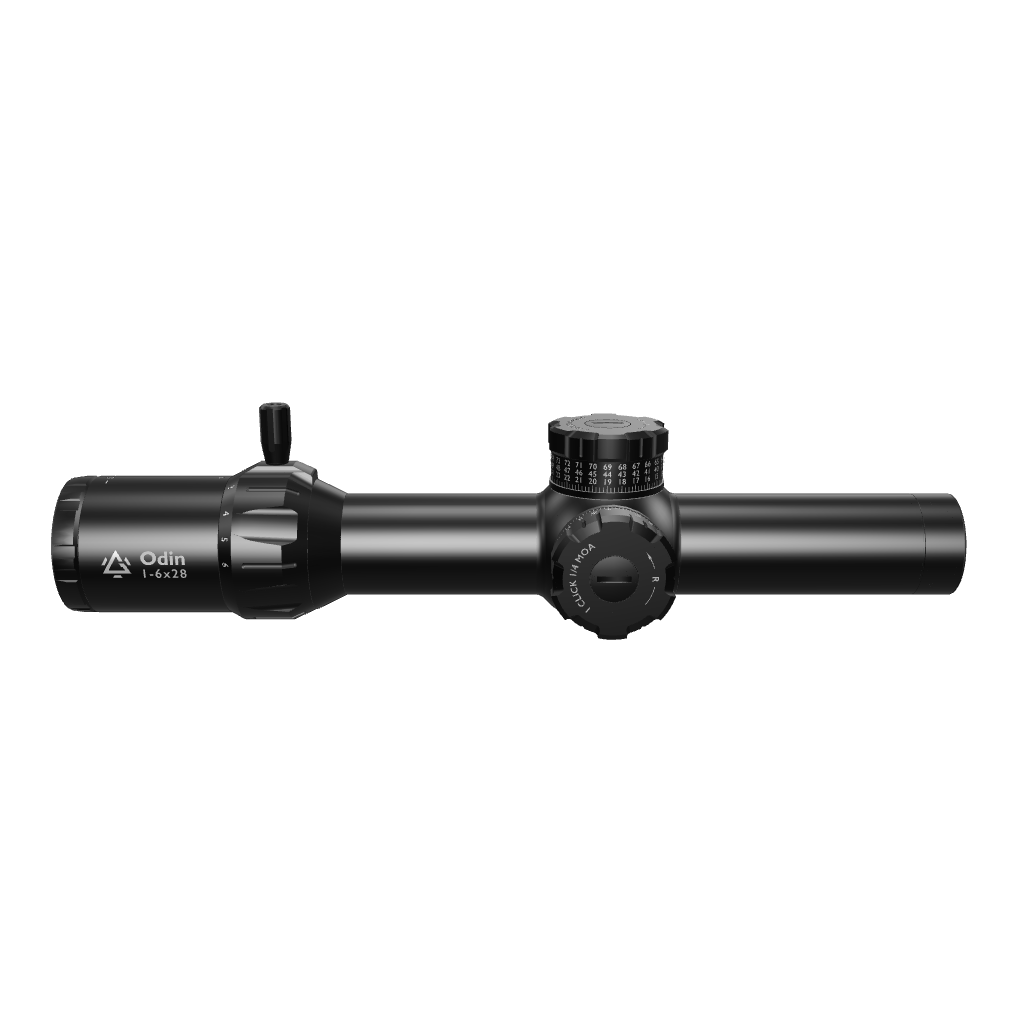LPVO vs Prism Scopes
For many common rifles like AKs and ARs, both an LPVO and a prism scope will work. So, how do you choose between the two? It comes down to what you intend to use the rifle for. You have to understand what each optic presents in terms of features, and how well those features match your intended use of your rifle.
Then there is also a matter of your shooting preferences. Make sure that you consider more niche features like speed, reticle design, size/weight, eye relief, and many more.
You need to understand which main features both optics present, and make a judgment on how well those features fit your rifle and how you intend to use it. This blog will help you narrow it down.

LPVO vs Prism Scope: What's the Difference?
The key feature of an LPVO, which differentiates it from a prism scope, is its adjustable magnification. An LPVO is versatile: at 1x, you can run it like a red dot, but you also have the option to zoom for more range over a longer distance.
With a prism scope, on the other hand, you get fixed magnification optics (usually 1x, 3x, or 5x), and it uses a prism design rather than traditional lenses. A prism scope will stand out more for its clarity and compactness. With a sharper etched reticle (which you can use without a battery), it is rugged, solid, and designed max efficiency at a fixed distance.
So, generally speaking, you choose an LPVO when you want versatility, and a prism scope when you want an optic that is compact and reliable at a given range.
LPVOs vs. Prism Scopes: How Well Do They Match Different Rifles?
| Rifle Type | LPVO vs Prism Scope | Why (with Secondary Option) |
| AR-15 / AR-10 platform rifles | LPVO |
|
| AK variants (AK-47, AKM, AK-74) | Prism |
|
| Modern sporting rifles / semi-auto hunting rifles | LPVO |
|
| Designated Marksman Rifles (DMRs) | LPVO |
|
| AR pistols and SBRs | Prism |
|
| Lightweight compact rifles | Prism |
|
| Defensive / home defense rifles | Prism |
|
The do-it-all nature of an LPVO makes it perfect for rifles that are, by design, more versatile: both for close-range speed and medium-to-long range accuracy
If you have a shorter-range, compact, rugged, or defensive rifle that demands simplicity and durability rather than flexibility in zoom, you want a prism scope.
LPVOs vs Prism Scopes: Differences In Features
| Feature | LPVO | Prism Scope |
| Magnification | Variable (1x–10x typical) | Fixed (1x–5x common) |
| Speed | Slower to acquire than red dots at 1x, but flexible | Faster, simpler aiming; no dialing needed |
| Reticle | Illuminated, but if the battery dies, the reticle may be faint | The etched reticle is always visible |
| Size/Weight | Larger, heavier | Compact, lighter |
| Eye Relief | More forgiving in higher-end models, but can be tight at max zoom | Usually shorter but consistent |
| Price Range | Wider range, can get pricey for good glass | Often cheaper for good quality |
| Best At | All-around versatility across distances | Simplicity, ruggedness, short-to-mid range |
LPVO vs Prism Scopes: Best Choice by Use Case
1. Self/Home Defense: Prism Scope (1x or 3x)
In close quarters, speed matters more than magnification. A 1x prism acts like a red dot but with the advantage of an etched reticle: always usable, even without a battery. Besides, it is more compact and therefore more handy indoors.
2. Hunting: LPVO
Hunting typically involves longer distances and shooting in unpredictable circumstances. An LPVO will let you dial down to 1x for close brush shots or zoom up for distant targets.
A prism scope will lock you into one magnification, which can leave you under- or over-scoped in the field.
Consider these practical tips for hunting with an LPVO
3. Target Shooting (Recreational Range Use): Both
Both an LPVO and a prism scope will work for target shooting and recreational use, but an LPVO offers more flexibility and versatility across distances. It is overall better for improving accuracy.
A prism scope is great if you’re shooting at fixed ranges (50–100 yards) and want something simpler, lighter, and budget-friendly.
4. Competition: LPVO
Competitions like 3-gun require engaging targets from 5 yards to 300 yards. The ability to switch from 1x for speed to 6x or 8x for precision makes LPVOs the go-to.
Technically speaking, a prism scope is faster at one set distance, but it lacks adaptability, which can be key in a competitive scenario.
5. Tactical Use (Duty, SHTF, Military/LE): LPVO (edge), with a niche for Prism
LPVOs make great tactical scopes. The versatile range of an LPVO covers unpredictable scenarios where you may need to clear a room and then take a long-range shot. The adaptability of an LPVO is almost unmatched.
Prism scopes, however, win in rugged simplicity: the etched reticle, less dependence on batteries, and lighter weight also make them a good option if reliability is your top priority.
Consider these tactical rifle scopes under $1000
6. Training: Both (Depends on training goal)
Prism for CQB and defensive rifle training. Teaches quick target acquisition without distraction. LPVO for broader riflecraft training across distances. Helps shooters practice transitioning from close to long-range engagements.

Bottom Line
An LPVO gives you more versatility, adaptability, and distance flexibility. Go for an LPVO if you are choosing an optic for hunting, competition, tactical versatility, or if the prospect of having one optic that does it all is appealing to you.
Prism scopes are for shooters who want speed, simplicity, and rugged reliability. If you are into home defense, basic carbine use, or if you just value durability and quick aiming over magnification flexibility.
If your rifle is a general-purpose tool, go LPVO. If it’s a home-defense carbine or a simple workhorse, go Prism. Consider this LPVO buying guide for more details.







